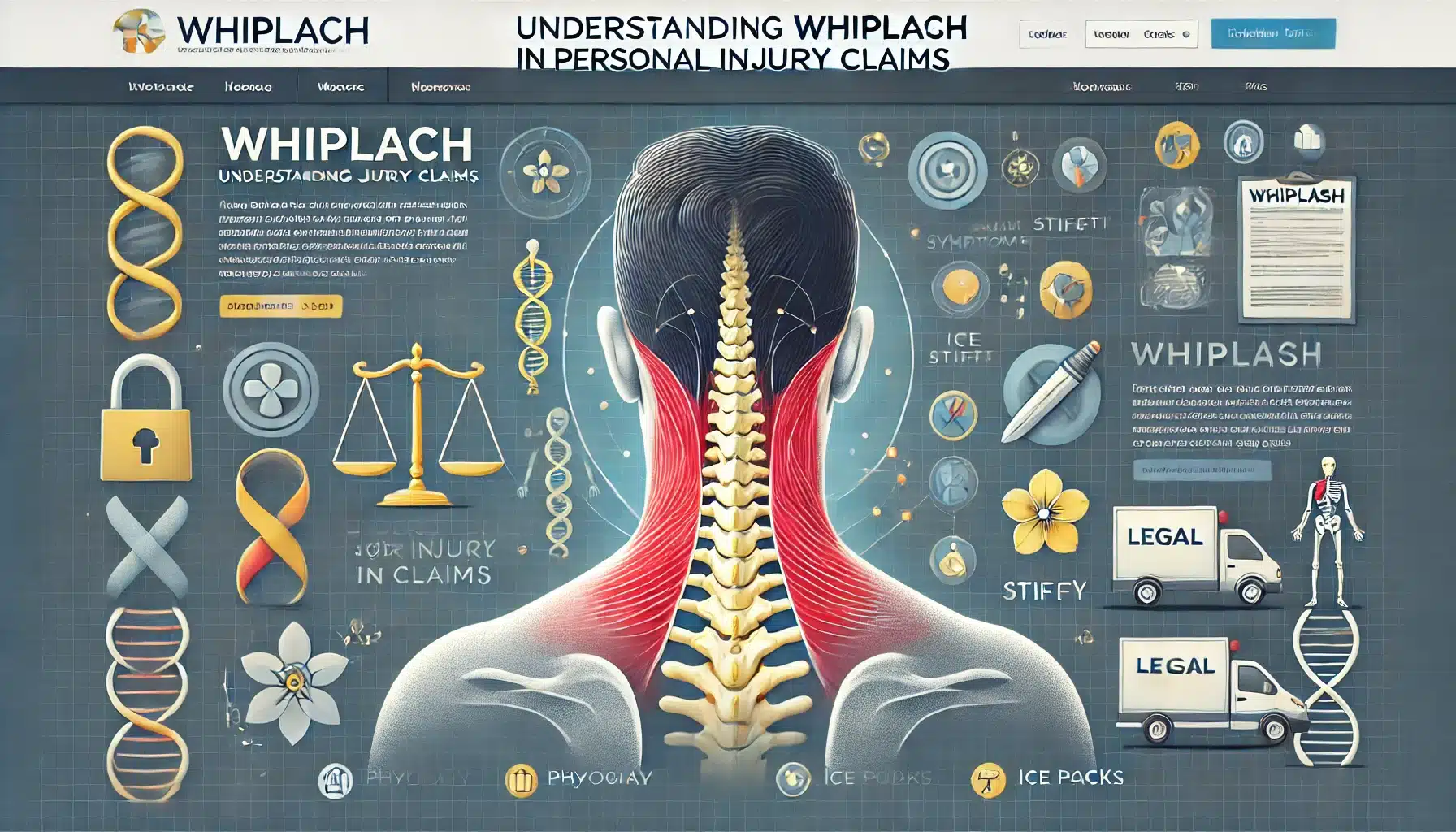on this page
key facts
- Whiplash is a neck injury from rapid motion, commonly due to motor vehicle accidents.
- Key symptoms include neck pain, headaches, and reduced range of motion.
- Diagnosis involves medical history, physical exams, and imaging tests like X-rays and MRIs.
- Treatment focuses on pain management and physical therapy; prevention includes using seat belts and strengthening neck muscles.
What is whiplash?
Whiplash is an injury to the neck caused by rapid back-and-forth motion, commonly occurring during rear-end car accidents. It affects the muscles, ligaments, and tendons in the neck.
Key aspects of whiplash
- Mechanism: Caused by sudden acceleration and deceleration that strains the neck.
- Symptoms: Common symptoms include neck pain, stiffness, headaches, and dizziness.
- Diagnosis: Diagnosed through medical history, physical examinations, and imaging tests like X-rays or MRIs if needed.
- Treatment: Typically involves pain management, physical therapy, and rest; severe cases may require more extensive treatment.
Understanding whiplash is essential for recognizing symptoms and seeking timely care.
What are the symptoms of whiplash?
Whiplash is an injury to the neck resulting from sudden movement, often due to car accidents. Symptoms can vary in severity and may develop hours or days after the injury.
Common symptoms
- Neck Pain: Persistent pain and stiffness in the neck area.
- Headaches: Often originating at the base of the skull and radiating towards the forehead.
- Reduced Range of Motion: Difficulty turning or tilting the head.
- Shoulder Pain: Discomfort in the shoulders or upper back.
- Numbness or Tingling: Sensations in the arms or hands may occur due to nerve irritation.
- Dizziness: Feelings of lightheadedness or balance issues.
- Fatigue: General tiredness and lack of energy following the injury.
- Cognitive Issues: Difficulty concentrating or memory problems may arise.
Recognizing these symptoms is essential for seeking timely medical evaluation and appropriate treatment.
What causes whiplash?
Whiplash is caused by sudden movements of the head and neck, often due to:
- Car Accidents: Most commonly from rear-end collisions.
- Sports Injuries: Impacts during contact sports.
- Falls: Abrupt neck movements from tripping or falling.
- Physical Assault: Shaking or blows to the head.
- Cervical Spine Disorders: Pre-existing conditions that heighten injury risk.
Recognizing these causes aids in prevention and treatment.
How is whiplash diagnosed?
Diagnosing whiplash involves a comprehensive evaluation of symptoms and physical assessments to confirm the injury.
Diagnostic steps
- Medical History: Review of symptoms, accident details, and any prior neck injuries.
- Physical Examination: Assessment of neck mobility, tenderness, and range of motion.
- Neurological Exam: Tests for nerve function, including reflexes and sensation.
- Imaging Tests:
- X-rays: Used to rule out fractures or other bone issues.
- MRI: Provides detailed images of soft tissues, helping to identify injuries to muscles and ligaments.
- CT Scan: May be utilized for a comprehensive view of the neck and spine.
These diagnostic methods help healthcare providers confirm whiplash and guide appropriate treatment plans.
What are the complications of whiplash?
Whiplash can lead to several complications, including:
- Chronic Pain: Long-lasting neck or shoulder pain.
- Reduced Range of Motion: Stiffness that limits head movement.
- Headaches: Tension or cervicogenic headaches.
- Nerve Damage: Possible numbness or weakness in the arms.
- Psychological Effects: Anxiety, depression, or post-traumatic stress.
- Sleep Disturbances: Pain leading to difficulty sleeping.
Recognizing these complications is essential for effective treatment.
How can you prevent whiplash?
Preventing whiplash involves proactive measures to reduce neck injury risk:
Prevention strategies
- Use Seat Belts: Always buckle up in vehicles.
- Adjust Headrests: Position headrests to support the head properly.
- Practice Safe Driving: Avoid distractions and maintain a safe distance.
- Use Safety Gear in Sports: Wear appropriate equipment to protect the neck.
- Strengthen Neck Muscles: Perform exercises to enhance neck stability.
- Maintain Good Posture: Practice proper posture to reduce strain.
Implementing these strategies can significantly lower the risk of whiplash.
How is whiplash treated?
Treatment for whiplash aims to relieve pain and restore mobility. Options include:
- Rest: Avoid strenuous activities to allow healing.
- Pain Management: Use over-the-counter medications like ibuprofen or acetaminophen.
- Ice and Heat Therapy: Apply ice for swelling, then heat to relax muscles.
- Physical Therapy: Perform exercises to improve flexibility and strength.
- Chiropractic Care: Consider spinal manipulation for pain relief.
- Cervical Collar: Use a soft collar for temporary support.
- Injections: Corticosteroid injections may be used for severe pain.
Effective treatment can enhance recovery and prevent long-term complications.
Resources and support
Individuals with whiplash can access various resources to aid recovery:
Key Resources
- Medical Professionals: Consult doctors and physical therapists for treatment plans.
- Support Groups: Join local or online groups for emotional support.
- Educational Materials: Access information on whiplash management from reputable sources.
- Pain Management Clinics: Seek specialized care for effective pain relief.
- Occupational Therapy: Engage in therapy to improve daily activities.
- Financial Assistance: Explore programs for support with medical expenses.
These resources can enhance recovery and overall well-being.












